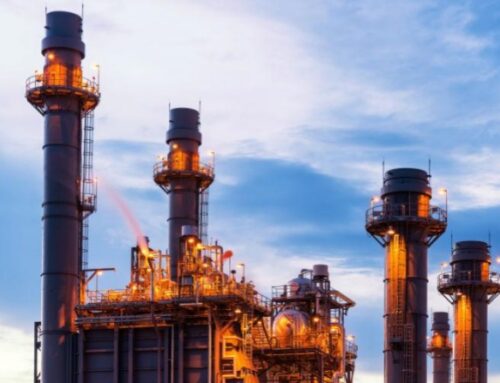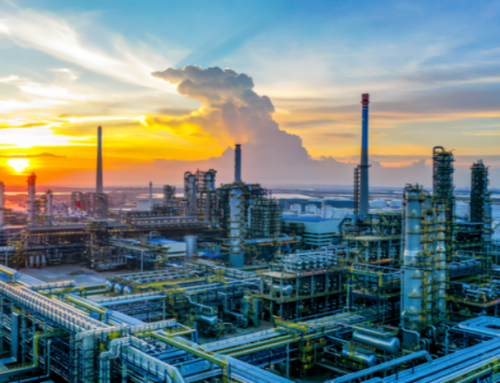Ethylene is the most basic raw material in petrochemical industry and the basis for producing various organic chemical products. Ethylene industry is the leading petrochemical industry, can drive plastic deep processing, rubber products, textiles, packaging materials, chemical machinery manufacturing, transportation and other related industries and even the development of the entire national economy, has a strong support, radiation and driving role. Its production scale and technical level mark the development level of a country’s petrochemical industry.
In 2021, the global ethylene total production capacity reached 210 million tons/year, consumption is about 197 million tons, China’s ethylene new capacity of more than 8 million tons/year, reaching 41.68 million tons/year, is the largest new capacity in the history of China’s ethylene industry. In 2021, China’s ethylene production is 37.47 million tons, the equivalent consumption reaches 58.32 million tons, the equivalent gap reaches about 20.85 million tons, and the self-sufficiency rate is about 64%. Due to the contradiction between supply and demand in the domestic market, coupled with the impact of imported products in cost, quality and other aspects, in addition to ethylene monomer, China also needs to import a large number of polyethylene (PE), ethylene glycol (EG), styrene (SM) and other downstream derivatives every year.
Due to the complex production process of ethylene, energy consumption is also very prominent, including the consumption of gas, neat, electricity, etc., there is a large energy saving and carbon reduction transformation and upgrading potential.

The main direction and technical path of green and low-carbon development of ethylene industry
In 2021, CO2 emissions from China’s petrochemical and chemical industry will account for about 8% of China’s total CO2 emissions, of which ethylene industry will account for about 8% of the industry. Ethylene production by steam cracking is the most important production route of ethylene in China, accounting for about 84% of the total ethylene production capacity in China. The production process mainly includes steam cracking in cracking furnace, cracking gas compression and distillation separation. Carbon emission sources mainly include CO2 emissions from cracking furnace fuel combustion, indirect emissions from heat and electricity consumption and torch emissions, among which direct emissions from fuel combustion account for about 60% and indirect emissions from heat and electricity consumption account for about 30%, which are the two main sources of CO2 emissions. Therefore, improving the thermal efficiency of cracking furnace, adopting high-efficiency separation technology, intelligent enabling and changing from steam drive to electric drive are one of the effective ways to save energy and reduce emission of steam cracking unit.
1 | Technology of enhanced heat transfer in cracking furnace tube By changing the internal structure (shape) or material of cracking furnace tube, changing the fluid flow state in the furnace tube, increasing the contact area, reducing the thickness of the boundary layer, enhancing heat transfer, and reducing fuel consumption and carbon emission.
The finned tubes developed by Lummus and other companies in the United States can increase the thermal efficiency of ordinary furnace tubes by 20% to 30%, which has been relatively mature. MERT series spiral pipe developed by Kubota Company in Canada can increase the heat transfer efficiency by more than 40%, and has been widely used. The Scope series of furnace tubes, developed by Schmidt + Clemens in Germany, use HT-E alloys to improve thermal efficiency and thus reduce fuel consumption through uniform circulation patterns. Lummus’ IHT furnace tube technology, in which a curved baffle is welded on the surface of the tube to improve reaction mixing and thermal efficiency, can extend the production cycle by 1.2 to 2.0 times and has been used in more than 50 naphtha cracking units.
2 | Cracking furnace tube coating technology can extend the cracking furnace operating cycle and the service life of the furnace tube, significantly reduce the coking rate, and reduce fuel gas consumption.
According to the function, it can be divided into barrier coating and catalytic coating. The barrier coating mainly plays the role of inert barrier and inhibits coking. On the basis of the barrier effect, the catalytic coating can catalyze the removal of coke by steam gasification reaction. Alon’s AlcroPlex Al/Si barrier coating can inhibit ethane cracking coking by up to 90% and naphtha cracking coking by up to 80%, doubling the HP 40 tube operation cycle. The YieldUp catalytic coating material launched by GE in the United States can undergo chemisorption and deprotonation reactions with water molecules, and the highly active oxygen atoms formed will react to produce CO and CO2 immediately after contact with coke, which will increase the operation cycle by 6 times.
3 | High efficiency separation technology can improve the separation efficiency of pyrolysis products and greatly reduce the process energy use, which is one of the key measures for energy saving and emission reduction of ethylene plant.
In addition to the continuous optimization of traditional distillation separation processes with advanced recovery systems (ARS) and binary/triple refrigeration technologies, scientists are also actively exploring new separation materials. According to the different molecular kinetic diameters and the characteristics of unsaturated bonds in ethylene molecules, scholars have synthesized and studied a variety of MOFs materials, such as MAF-49, PCN-250, etc., which have proved to have good ethylene/ethane selectivity. In addition, Zhejiang University has studied a new type of hydrogen-bonded organic frame material (HOFs), because of its unique non-polar/inert pore surface, it can generate strong force with ethane, achieve ethane/ethylene reverse separation, and is a better ethane adsorbent. However, at present, these materials are still in the laboratory stage, and continuous research is needed to achieve industrial application as soon as possible.
4 | Intelligent control system (IPC) establishes the relationship model between input variables and output variables through data identification, predicts the trend of output variables and realizes closed-loop control, which can improve the running stability of the device and the stability of product quality, and reduce the energy consumption of the device.
Advanced production process control (APC) technology, represented by DMCPlus software based on dynamic matrix control (DMC) introduced by Aspen Tech, can improve product yield by reducing the fluctuation degree of process variables and realizing card edge operation on this basis. At present, companies have applied artificial intelligence (AI) technology to the ethylene production process, and information technology will help more to optimize the traditional chemical production process in the future and further achieve fine green production.
5 | The use of green electricity to heat cracking furnaces is expected to achieve a reduction of up to 90%, and the electrification of cracking furnaces will become an important way to reduce carbon emissions from ethylene cracking units.
Many companies around the world, including Dow and Shell cooperation, BASF, Sabik and Linde cooperation, as well as domestic large oil and petrochemical companies are conducting electric heating cracking furnace research. Including long life and high-power electric furnace design, new efficient electric heating body material technology, advanced control system, etc., all need to achieve technological breakthroughs. In addition, Coolbrook of Finland, in collaboration with the University of Cambridge, has developed a rotary dynamic reactor (RDR) technology, which has a rotor at a speed of 20,000r/min at the center of the reactor. It propelling naphtha or ethane feedstock into a diffusion chamber at supersonic speeds, converting kinetic energy generated by shock waves into thermal energy, heating the feedstock to cracking temperatures, and is expected to be industrialised by 2025.

Article from M&J International Trading Co., Ltd





